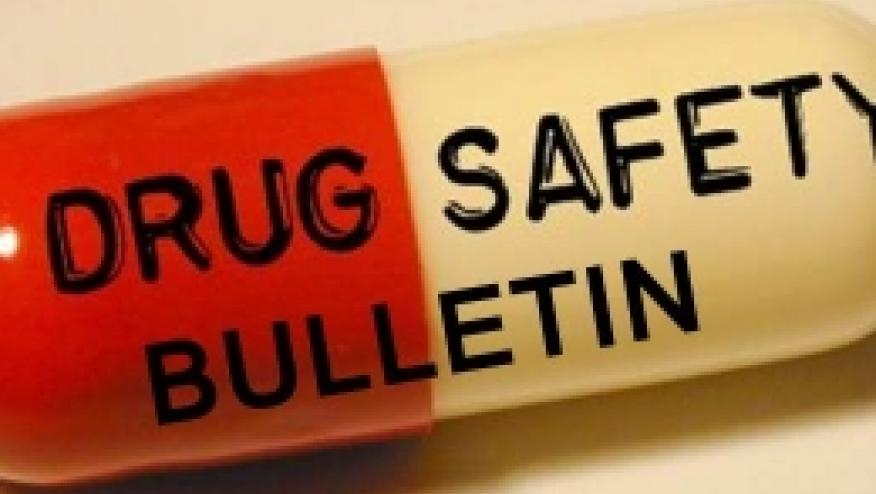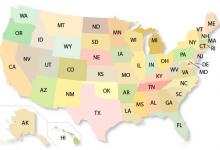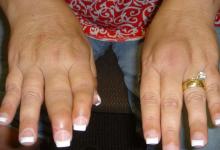DSB Reports and Updates - October 2015 Save

This month's DSB addresses labeling changes as well as safety reports from literature, including steps to prevent major birth defects, timing and intervals between PCV13 and PPSV23 vaccines, PPIs and subacute cutaneous lupus, and FDA warnings on tramadol in children.
Safety Reports from the Literature
MMWR 64(39);1104-7 Understanding the Causes of Major Birth Defects — Steps to Prevention. The October 9th issue of MMWR is devoted to Major Birth Defects, prevention and programs that exist to prevent them. Each year in the US, 3% of live births (approximately 120,000 infants) have an identifiable structural birth defect. Drugs with a teratogenic potential should be avoided and includes thalidomide, isotretinoin, valproic acid, methotrexate, and mycophenolate mofetil. Other risk factors include maternal infections, maternal comorbidities (diabetes), smoking or alcohol use, maternal pre-pregnancy obesity; opioid pain medications, trimethoprim-sulfamethoxazole and selective serotonin reuptake inhibitors. Citation source: http://buff.ly/1QplSNT
MMWR 64(34);944-947. Timing and Intervals Between PCV13 and PPSV23 Vaccines. The Advisory Committee on Immunization Practices (ACIP) recommends that a dose of PCV13 (Prevnar) be followed by a dose of PPSV23 (Pneumovax23) in all adults aged ≥65 years who have not previously received pneumococcal vaccine and in persons aged ≥2 years who are at high risk for pneumococcal disease. The intervals between PCV13 and PPSV23 given in series differ by age and risk group and the order in which the two vaccines are given. For the elderly with no underlying medical conditions the interval between either vaccine (PCV13PPSV23 or PPSV23PCV13) should be >12 mos.
ACIP recommends that PCV13 be given first followed by PPSV23 6–12 months later. ACIP also recommends adults aged ≥65 years who already received a dose of PPSV23 should also receive a dose of PCV13 ≥1 year after the dose of PPSV23. For immunocompromised persons (all age groups) who received PCV13 first, the PPSV23 vaccine should be given >8 weeks after PCV13. For immunocompromised persons who have received PPSV23 first the PCV13 should be given >8 weeks later if under 18 yrs of age and >1 year later if 19 yrs or older. Citation source: http://buff.ly/1ZAQulM
October 15th is Global Hand Washing Day. Handwashing with soap has an important role in child survival and health. About 1.8 million children aged <5 years die each year from diarrheal diseases and pneumonia, the top two causes of death among young children globally. Handwashing with soap can reduce the incidence of diarrhea among this age group by about 30% and respiratory infections by about 20%. http://www.cdc.gov/handwashing/
Proton Pump Inhibitors and Subacute Cutaneous Lupus Erythematosus. The Medicines and Healthcare products Regulatory Agency in the UK has issued a drug safety update relating to proton pump inhibitors (PPIs). The update states that PPIs are associated very infrequently with cases of SCLE, a non-scarring dermatosis that can develop in sun-exposed areas. Citation source: http://buff.ly/1Ljwc6K
FDA Warnings on Tramadol in Children. Tramadol is not approved for use in children. Yet off-label use has the FDA investigating the use of the pain medicine tramadol in children aged 17 years and younger, because of the rare but serious risk of slowed or difficult breathing. This risk may be increased in children treated with tramadol for pain after surgery to remove their tonsils and/or adenoids. Parents and caregivers of children taking tramadol who notice any signs of slow or shallow breathing, difficult or noisy breathing, confusion, or unusual sleepiness should stop tramadol and seek medical attention immediately by taking their child to the emergency room or calling 911. Sept. 21, 2015 Citation source: http://buff.ly/1Gd0hrF
September 2015 Safety Labeling Changes
Zidovudine (multiple HIV combo drugs) and Myopathy. Prolonged use of zidovudine has been associated with symptomatic myopathy. Lactic Acidosis and Severe Hepatomegaly with Steatosis Lactic acidosis and severe hepatomegaly with steatosis, including fatal cases, have been reported with the use of nucleoside analogues and other antiretrovirals. Discontinue Trizivir if clinical or laboratory findings suggestive of lactic acidosis or pronounced hepatotoxicity occur.
Doxycycline (Doryx) and Intracranial hypertension (IH). IH and pseudotumor cerebri have been associated with the use of tetracyclines including Doryx. Clinical manifestations of IH include headache, blurred vision, diplopia, and vision loss: papilledema can be found on fundoscopy. Women of childbearing age who are overweight or have a history of IH are at greater risk for developing tetracycline associated IH. Avoid concomitant use of isotretinoin and Doryx because isotretinoin is also known to cause pseudotumor cerebri. Although IH typically resolves after discontinuation of treatment, the possibility for permanent visual loss exists. If visual disturbance occurs during treatment, prompt ophthalmologic evaluation is warranted since intracranial pressure can remain elevated for weeks after drug cessation patients should be monitored until they stabilize.
Invokana (canagliflozin). An increased risk of bone fracture, occurring as early as 12 weeks after treatment initiation, was observed in patients using canagliflozin. Consider factors that contribute to fracture risk prior to initiating Invokamet or Invokana. The occurrence of bone fractures was evaluated in a pool of nine clinical trials with a mean duration of exposure to canagliflozin of 85 weeks. The incidence rates of adjudicated bone fractures were 1.1, 1.4, and 1.5 per 100 patient-years of exposure in the comparator, canagliflozin 100 mg, and canagliflozin 300 mg groups, respectively. Fractures were observed as early as 12 weeks after treatment initiation and were more likely to be low trauma (e.g., fall from no more than standing height), and affect the upper extremities.










If you are a health practitioner, you may Login/Register to comment.
Due to the nature of these comment forums, only health practitioners are allowed to comment at this time.